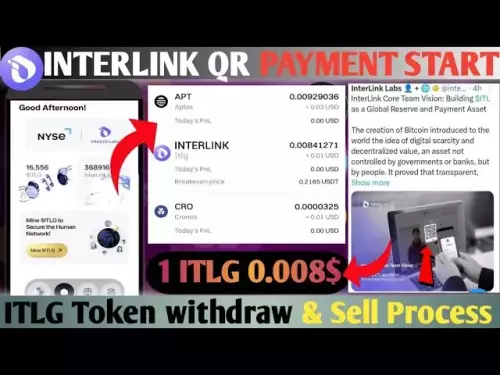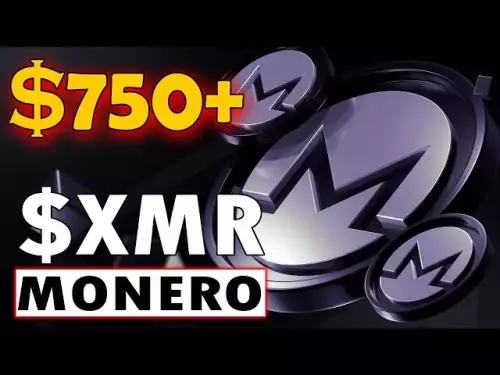-
 bitcoin
bitcoin $107208.295278 USD
-1.54% -
 ethereum
ethereum $3874.629914 USD
-1.38% -
 tether
tether $1.000440 USD
0.03% -
 bnb
bnb $1089.465513 USD
-5.53% -
 xrp
xrp $2.327672 USD
-1.65% -
 solana
solana $184.766505 USD
-0.73% -
 usd-coin
usd-coin $1.000076 USD
0.02% -
 tron
tron $0.310632 USD
-1.99% -
 dogecoin
dogecoin $0.187615 USD
-1.60% -
 cardano
cardano $0.633389 USD
-2.75% -
 ethena-usde
ethena-usde $0.999553 USD
0.03% -
 hyperliquid
hyperliquid $35.608231 USD
-4.13% -
 chainlink
chainlink $16.876114 USD
-3.98% -
 stellar
stellar $0.312239 USD
-0.91% -
 bitcoin-cash
bitcoin-cash $473.262969 USD
-7.09%
How to track and analyze Ethereum's whale address changes?
Tracking Ethereum whale addresses using tools like Etherscan, Nansen, DeBank, and CryptoQuant can provide insights into market trends and potential price movements.
Apr 26, 2025 at 01:42 am

Understanding how to track and analyze changes in Ethereum's whale addresses is crucial for gaining insights into market trends and potential price movements. Whale addresses are typically those holding large amounts of Ethereum, and their activities can significantly impact the market. This article will guide you through the process of tracking and analyzing these changes effectively.
Tools for Tracking Ethereum Whale Addresses
To start tracking Ethereum whale addresses, you'll need to utilize specific tools designed for blockchain analysis. Some of the most popular tools include:
Etherscan: This is a blockchain explorer that allows you to monitor transactions, addresses, and other activities on the Ethereum network. You can use Etherscan to search for specific addresses and track their movements.
Nansen: A platform that provides detailed analytics on Ethereum and other blockchain networks. Nansen offers insights into whale movements, smart money, and market trends.
DeBank: This tool helps you track DeFi activities and large transactions, making it easier to spot whale movements within the decentralized finance ecosystem.
CryptoQuant: Primarily focused on on-chain data, CryptoQuant can help you analyze whale behavior and its impact on the market.
Setting Up Tracking on Etherscan
To set up tracking on Etherscan, follow these steps:
Visit Etherscan: Go to the Etherscan website and navigate to the search bar at the top of the page.
Search for an Address: Enter the Ethereum address you want to track. This could be a known whale address or any address you're interested in monitoring.
Add to Watchlist: Once you've found the address, you can add it to your watchlist by clicking on the 'Add to Watchlist' button. This will allow you to easily monitor the address's activity.
Set Up Alerts: Etherscan allows you to set up alerts for specific activities such as large transactions or changes in balance. Click on the 'Alerts' tab and set up the parameters you want to be notified about.
Analyzing Whale Address Changes
Once you've set up your tracking, the next step is to analyze the changes in whale addresses. Here are some key metrics to focus on:
Transaction Volume: Look at the volume of transactions coming from the whale address. Large volumes can indicate significant buying or selling activity.
Balance Changes: Monitor the changes in the balance of the whale address. Sudden increases or decreases can signal market moves.
Transfer Patterns: Analyze the patterns of transfers to and from the whale address. Regular transfers to certain addresses might indicate a strategy or collaboration.
Smart Contract Interactions: Pay attention to interactions with smart contracts, as these can reveal participation in DeFi protocols or other blockchain activities.
Using Nansen for Deeper Insights
Nansen provides more advanced analytics that can help you dive deeper into whale address changes. Here's how to use Nansen effectively:
Access Nansen Dashboard: Log into your Nansen account and navigate to the dashboard.
Search for Whale Addresses: Use the search function to find the whale addresses you're interested in.
Analyze Smart Money Movements: Nansen categorizes addresses into different types, including 'smart money.' Focus on these addresses to see how they're moving their Ethereum.
Use the Heatmap: Nansen's heatmap can show you areas of high activity, helping you identify trends and potential whale movements.
Explore DeFi Activities: Nansen provides detailed insights into DeFi activities, allowing you to see how whales are interacting with different protocols.
Utilizing DeBank for DeFi Tracking
DeBank is particularly useful for tracking whale movements within the DeFi ecosystem. Here's how to use DeBank:
Visit DeBank: Go to the DeBank website and log in to your account.
Search for Addresses: Enter the whale address you want to track in the search bar.
Monitor DeFi Activities: DeBank shows you the DeFi activities associated with the address, including lending, borrowing, and staking.
Set Up Alerts: Like Etherscan, DeBank allows you to set up alerts for specific activities. Use these to stay updated on whale movements in DeFi.
Analyze Portfolio Changes: DeBank provides a portfolio view, which can help you see how the whale's holdings are changing over time.
Interpreting Data from CryptoQuant
CryptoQuant offers a wealth of on-chain data that can help you understand whale behavior. Here's how to use CryptoQuant for analysis:
Access CryptoQuant: Log into your CryptoQuant account and go to the dashboard.
Look at Exchange Flows: Monitor the flow of Ethereum to and from exchanges. Large inflows or outflows can indicate whale movements.
Analyze Network Growth: Pay attention to network growth metrics, as they can signal increasing or decreasing whale activity.
Use the Whale Alert Tool: CryptoQuant's whale alert tool can notify you of large transactions, helping you stay on top of whale movements.
Check the Stablecoin Supply Ratio: This metric can give you insights into market sentiment, which can be influenced by whale activities.
Combining Data for Comprehensive Analysis
To get a comprehensive view of Ethereum whale address changes, it's important to combine data from multiple sources. Here's how to do it:
Cross-Reference Data: Use data from Etherscan, Nansen, DeBank, and CryptoQuant to cross-reference whale movements and activities.
Create a Spreadsheet: Compile the data into a spreadsheet to track changes over time. This can help you identify patterns and trends.
Set Up Automated Reports: Some tools allow you to set up automated reports that can be emailed to you regularly, keeping you updated on whale activities without manual tracking.
Collaborate with Others: Join communities or forums where other analysts share their findings on whale movements. This can provide additional insights and help you validate your own analysis.
FAQs
Q: Can tracking whale addresses help predict Ethereum price movements?A: While tracking whale addresses can provide insights into potential market trends, it's not a foolproof method for predicting price movements. Other factors such as market sentiment, regulatory news, and global economic conditions also play significant roles in price fluctuations.
Q: Are there any risks associated with relying too heavily on whale address tracking?A: Yes, there are risks. Over-reliance on whale address tracking can lead to misinterpretation of data and false signals. It's important to use this information in conjunction with other market analysis tools and not as the sole basis for investment decisions.
Q: How can I ensure the privacy of my own Ethereum transactions while tracking whales?A: To maintain your privacy, use tools like privacy-focused wallets and consider using mixing services or privacy protocols like Tornado Cash. Always be cautious about sharing personal information or linking your real identity to your Ethereum transactions.
Q: Is there a way to automate the tracking of multiple whale addresses?A: Yes, some platforms like Nansen and CryptoQuant offer API access that can be used to automate tracking. You can set up scripts or use third-party tools to monitor multiple addresses and receive alerts automatically.
Disclaimer:info@kdj.com
The information provided is not trading advice. kdj.com does not assume any responsibility for any investments made based on the information provided in this article. Cryptocurrencies are highly volatile and it is highly recommended that you invest with caution after thorough research!
If you believe that the content used on this website infringes your copyright, please contact us immediately (info@kdj.com) and we will delete it promptly.
- Crypto, DeFi, and Regulation: Navigating the Wild West in Style
- 2025-10-18 23:05:14
- BlockDAG: The Breakthrough Challenging Litecoin's Legacy
- 2025-10-18 23:05:14
- BNB Price Rally: Will Binance Coin Hit $2,000?
- 2025-10-18 22:45:14
- Pi Network: Testnet Triumphs and Community Innovation Surging!
- 2025-10-18 22:45:14
- Ethereum Price: Bullish Signals Emerge Amidst BitMine ETH Accumulation
- 2025-10-18 23:10:16
- Pi Network, DEX, and Crypto Trading: A New Era of Transparent Finance
- 2025-10-18 22:50:13
Related knowledge

Practical parameter settings for a Bitcoin multi-timeframe moving average system
Sep 18,2025 at 10:54pm
Optimizing Timeframe Combinations for Bitcoin Trading1. Selecting appropriate timeframes is crucial when building a multi-timeframe moving average sys...

How can I filter out false breakouts in Dogecoin high-frequency trading?
Sep 22,2025 at 01:00am
Understanding False Breakouts in Dogecoin Trading1. A false breakout occurs when Dogecoin's price appears to move beyond a defined support or resistan...

Techniques for identifying tops and bottoms in the Bitcoin on-chain NVT model
Sep 20,2025 at 07:54pm
Understanding the NVT Model in Bitcoin Analysis1. The Network Value to Transactions (NVT) ratio is often described as the 'P/E ratio' of the cryptocur...

What does the surge in open interest in Bitcoincoin futures mean?
Sep 20,2025 at 11:18pm
Understanding the Surge in Dogecoin Futures Open Interest1. A surge in open interest within Dogecoin futures indicates a growing number of active cont...

How can I use the Ethereum USDT premium to gauge market sentiment?
Sep 18,2025 at 11:55pm
Understanding the Ethereum USDT Premium1. The Ethereum USDT premium refers to the price difference between USDT (Tether) traded on Ethereum-based plat...

What should I do if Ethereum staking yields decline?
Sep 20,2025 at 06:18am
Understanding the Causes Behind Declining Ethereum Staking Yields1. The Ethereum network transitioned to a proof-of-stake consensus mechanism with the...

Practical parameter settings for a Bitcoin multi-timeframe moving average system
Sep 18,2025 at 10:54pm
Optimizing Timeframe Combinations for Bitcoin Trading1. Selecting appropriate timeframes is crucial when building a multi-timeframe moving average sys...

How can I filter out false breakouts in Dogecoin high-frequency trading?
Sep 22,2025 at 01:00am
Understanding False Breakouts in Dogecoin Trading1. A false breakout occurs when Dogecoin's price appears to move beyond a defined support or resistan...

Techniques for identifying tops and bottoms in the Bitcoin on-chain NVT model
Sep 20,2025 at 07:54pm
Understanding the NVT Model in Bitcoin Analysis1. The Network Value to Transactions (NVT) ratio is often described as the 'P/E ratio' of the cryptocur...

What does the surge in open interest in Bitcoincoin futures mean?
Sep 20,2025 at 11:18pm
Understanding the Surge in Dogecoin Futures Open Interest1. A surge in open interest within Dogecoin futures indicates a growing number of active cont...

How can I use the Ethereum USDT premium to gauge market sentiment?
Sep 18,2025 at 11:55pm
Understanding the Ethereum USDT Premium1. The Ethereum USDT premium refers to the price difference between USDT (Tether) traded on Ethereum-based plat...

What should I do if Ethereum staking yields decline?
Sep 20,2025 at 06:18am
Understanding the Causes Behind Declining Ethereum Staking Yields1. The Ethereum network transitioned to a proof-of-stake consensus mechanism with the...
See all articles










































































